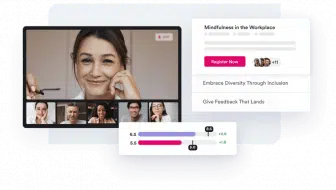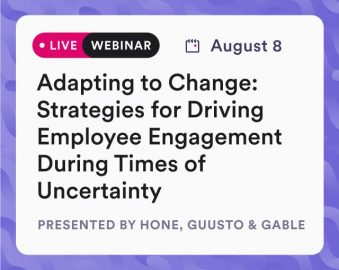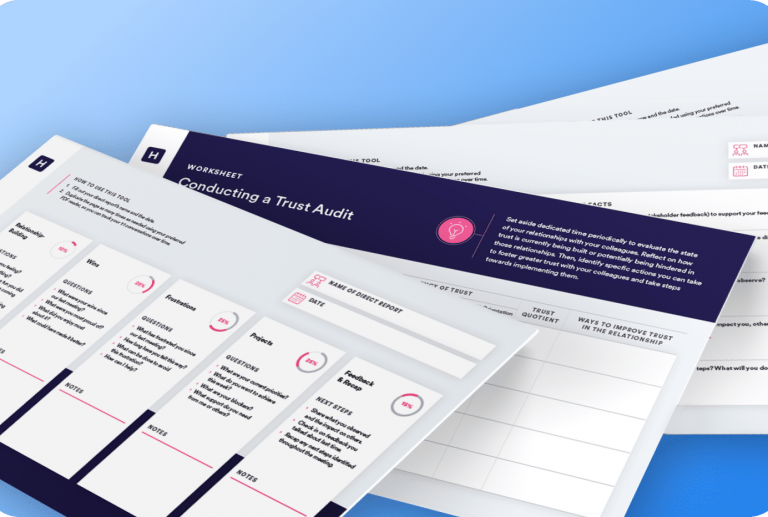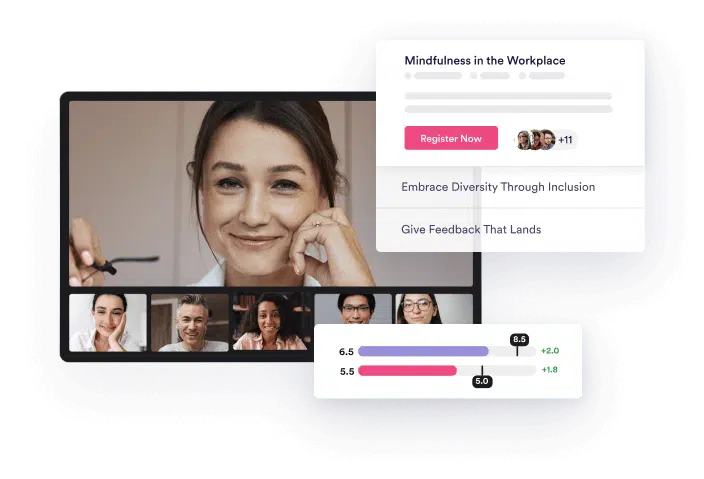What is Conflict Resolution?
The definition of conflict resolution refers to the process of finding a peaceful solution to a dispute. Therefore, it is beneficial for management and employees alike to know how to manage conflict at work through conflict resolution. Workplace conflict is destructive for business because it can lead to downturns in productivity and increases in absenteeism. In addition, on an individual level, workplace conflict is stressful and unpleasant.
Benefits of conflict resolutions:
- Builds strong relationships
- Maintains morale
- Achieves goals
- Reduces stress
- Provides insight
- Improves retention
5 Conflict Resolution Skills in the Workplace
Conflict resolution skills are often seen as leadership traits. Employees who can identify disagreements, acknowledge different opinions, and build a consensus are valuable to many organizations. They make it more likely for personal differences to be set aside so work can continue.
1. Communication and Conflict Resolution
Good communication skills are essential for sharing and understanding information more accurately and quickly. Conversely, poor communication is often the leading cause of most misunderstandings and disputes.
Many effective communication strategies are the best strategies to prevent conflicts and reach resolutions, such as
- Asking questions
- Cultivating empathy and compassion
- Using open body language
- Writing about the conflict
For instance, managers may need a guide to managing difficult conversations remotely with direct reports they see only through telecommunication services.
2. Active Listening
Active listening involves focusing on what the other person has to say, staying quiet as they speak, and listening to how they phrase things. It helps listeners hear and understand what someone else is saying, and it encourages the speaker to express themself clearly.
3. Empathy
Empathy in the workplace supports professional relationships and prevents conflicts. It is the ability to relate to how other people feel based on personal experiences. Understanding feelings and having empathy help individuals work with colleagues to create a solution to the problem.
4. Managing Emotions
Conflicts and tense conversations can stir up emotions. An argument or disagreement can feel like a threat or loss, triggering natural defense mechanisms like “fight or flight” responses. Emotions can interfere with an individual’s ability to maintain focus, reason, and resolve conflicts. Emotional management skills include self-awareness, reflection, perspective, and acceptance.
5. Nonviolent Communication
Nonviolent communication (NVC) is not a technique to end disagreements but rather a method designed to increase empathy and improve the quality of life of those who utilize it and those around them. According to The Center of Nonviolent Communication, NVC is about connecting with others and recognizing our commonalities and differences.
How to Resolve Workplace Conflicts in 5 Steps
1. Identification of the Conflict
Managers need to understand the root cause to resolve workplace issues. For example, determining whether the conflict is caused by a personality clash or a dispute over business ideas, decisions, or actions is essential.
Examples:
- Employees who become upset during particular work-related issues are experiencing a business conflict. However, individuals still respect each other even if they are frustrated about others’ views.
- Conversely, the conflict is likely a personality clash if an individual gets angry or frustrated with another constantly. Workers engaged in these disputes may display anger out of proportion.
Ignoring a problem can often cause it to worsen. Managers should address conflicts when they occur to head off what might become a volatile situation.
2. Assessment of the Conflict
Defining the cause of the conflict will help management to understand how the issue grew in the first place. Both parties must agree on the issue and discuss meeting the needs.
Managers must obtain as much information as possible on each side’s outlook by asking questions until they are confident that all the conflicting parties understand the issue.
Example:
- A manager diagnoses a conflict between two employees by asking, “What happened?” and “What would you like to happen?” Each tells their side of the disagreement, and the manager restates the problem to both parties.
Sometimes, conflicts can be resolved just through facilitated, open dialogue.
3. Determining a Resolution
Managers, mediators, and employees must decide on a favorable resolution for everyone involved. All parties should focus on the issue and prepare to compromise. Additionally, they need to put aside feelings, appreciate and value others’ different opinions, and listen to understand their point of view.
Example:
- The manager sits with both parties to discuss common ways to resolve the matter and meet the company’s objectives. Then, they brainstorm and negotiate a compromise.
Each party should provide an acknowledgment that the proposed solution is the best one possible. For a solution to be effective, each party must feel the solution is just and fair.
4. Implementation of the Resolution
The Dual Concern Model is a powerful model developed by organizational psychologists to address conflicts. The steps are based on dimensions of empathy and assertiveness.
Examples:
- Collaboration is the first step, and it involves high empathy and assertiveness to come to a solution. A collaborative question would be, “Would you be willing to work together to find a solution that helps both of us?”
- Compromise is used when each party needs to view the outcome fairly. For example, managers and mediators might ask, “Would you be willing to meet in the middle?”
- Competition can be a way to muscle through a conflict when there needs to be a swift resolution. For example, a manager could use a competitive question like, “Would you be willing to accept my solution?” if they believe their approach was best.
- Accommodation can quickly resolve an issue when something is less important to one party and more critical to another. An accommodation statement is, “I accept your request.”
- Avoidance may be an option if all parties agree to ignore or address it later. For example, a party may ask, “Would you be willing to wait and see if the situation resolves itself?”
Managers and mediators must determine the best style for the situation. For instance, avoidance is usually the least effective practice, but it may be possible if a minor workplace conflict is likely to go away on its own.
5. Evaluation of the Resolution
The last step is when a manager acknowledges and validates employees’ experience. The conflict will likely continue if both parties aren’t aligned.
Example:
- The manager uses the competition style and asks each party if they accept their resolution. Then, the employees give their feedback on the decision.
Managers must revisit their diagnosis or choose a new conflict style if they sense misalignment or pushback.
5 Types of Conflict Resolution Strategies
1. Informal Resolution: An informal conflict resolution is an approach that allows the parties involved to stay in control of the process and settle it themselves. The success of this strategy depends on the good faith of all the parties involved and their willingness to resolve the conflict peacefully.
2. Formal Resolution: Employees may initiate formal resolution methods by filing a complaint or grievance when conflicts can’t be resolved through individual discussions. Steps in formal conflict management may include mediation or arbitration.
3. Mediation: Mediation involves a neutral third party to help disputants reach a consensus. The third-party does not impose a solution but encourages the parties to resolve their disagreements.
4. Arbitration: Arbitration resembles a court trial, with one or more neutral parties listening to evidence and deciding.
5. Collaborative Problem-Solving: Collaborative problem-solving involves individuals pooling their understanding and effort to resolve problems. It is a process of negotiation that crafts an outcome to which all participants can agree.
5 Ways Conflict Resolution Training and Development Can Help Managers
Conflict resolution training and development can help managers quickly diagnose a conflict and gather the necessary information to resolve it.
1. Understanding Conflict and Its Causes
The first step in conflict resolution training should be teaching managers to ask the right questions. Here are a few examples of questions managers should ask their direct reports to get to diagnose the conflict:
- What’s going on?
- How are you feeling?
- What can I do for you?
Managers trained to recognize and handle conflicts embrace a positive and assertive approach to finding resolutions. This experience and confidence can keep employees productive, content, and focused on business goals.
2. Building Conflict Resolution Skills
Workplace conflicts are an inevitability. However, managers who develop and nurture conflict management skills through training can better handle disagreements and keep direct reports on track.
Managing conflict requires interpersonal skills and an understanding of conflict management techniques. Employees and managers can learn and apply a wide array of conflict resolution skills, depending on the type of conflict they find themselves in.
3. Enhancing Communication Skills
It’s essential to have strong communication and active listening skills and stay engaged so disputants feel heard. Body language and other nonverbal cues are just as important as spoken words. For instance, managers must keep an open posture and stance and maintain eye contact during conflict management sessions to build rapport and trust.
Conflict resolution requires specific communication skills. However, even managers proficient at getting their point across can benefit from learning how to listen when emotions are tense.
4. Developing a Conflict Resolution Process
A science-backed method helps people leaders resolve conflicts and issues on their teams. A conflict resolution process involves diagnosing the conflict, choosing a conflict style, and evaluating the results.
5. Implementing a Continuous Improvement Process
When managed well, conflicts can be a tremendous tool to grow companies. Healthy conflict resolution implements changes that make businesses stronger. The key is to channel that conflict into productive avenues without driving a wedge between employees.
Workplaces reflect the varied culture of their end consumers to help better anticipate and meet their needs. However, cultural and philosophical differences can create workplace conflict.
Successful conflict resolution alleviates temporary discords and ensures a harmonious and collaborative workplace. In addition, conflict resolution training for managers helps them manage relationships with their direct reports, peers, and stakeholders.
Additional Resources for Learning Leaders
A fear of disputes can sabotage many opportunities in the workplace. Conflict resolution training gives managers and coworkers a straightforward process to provide constructive feedback in a way that doesn’t assign blame.
Training can improve communication and collaboration so employees are more productive. Some of Hone’s conflict management classes that can strengthen teams include:
- Address Microaggressions on Your Team
- Transform Conflict into Collaboration
- Identify the Right Conflict Style
- Bridge Cultural Differences Across Your Organization
Manager conflict resolution training helps individuals acquire the skills and knowledge needed to be effective. It can also include training on specific processes used in their organization so leadership is cohesive throughout.








